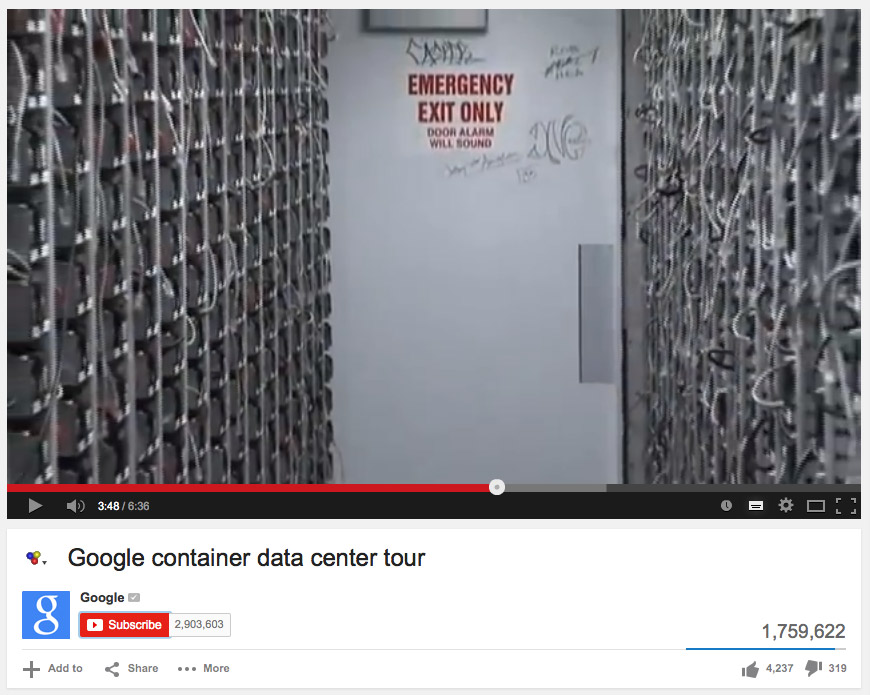
Since 2005, Google is interested in shipping data centers installed in 40” standard international containers. However, they also worked on the setup of the whole data center building composed of these containers. This video walks us through one of these actual buildings. The screenshot above is a rare documentation of an exception addressing one of the eeriest aspects of data centers: the absence of any trace of human life or moreover social life, as depicted in Timo Arnall’s Time Machine. Graffiti is however a particularly redundant trace of human activity which reaches the most hostile environments, and in this particular sense it is interesting to consider two aspects.
First, in contemporary urban landscapes graffiti is often considered as a re-appropriation of public space. Therefore, in the case of the data center, which is obviously a corporate space, it seems to underline the socially problematic and blurry boundaries between public data and corporate data. Second, graffiti is a form of asemic writing, as well as undeciphered texts. As handwriting fades, data is carefully kept in redundancy, and as theorists and philosophers like Michel Thévoz or Jean Baudrillard underline, contemporary graffiti was born in the same years as the computer, the photocopier and modern replication technologies. It was (re)born through the paradigm shift from physical architectures to information architectures. It seems as if when internet grew out of Chatrooms and posted on the Wall, it lost the scribles.
–-
Via Youtube


